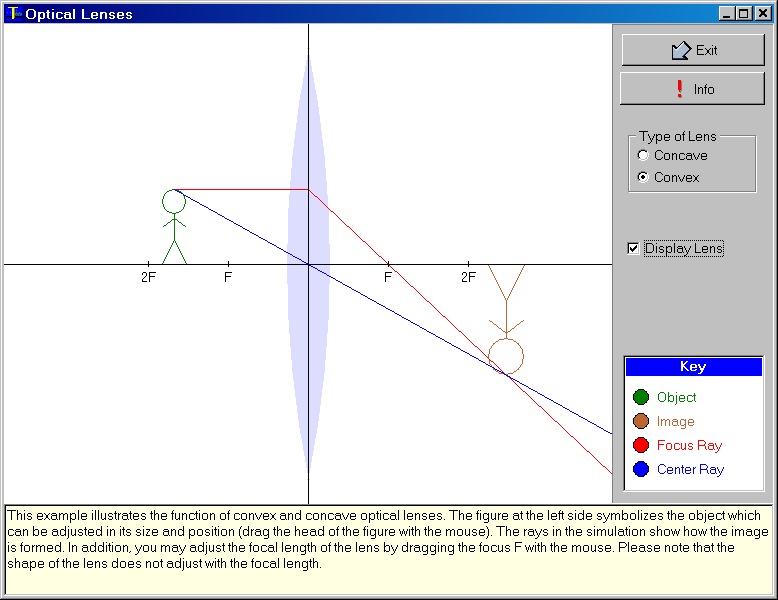| Learning by Simulations has been developed by Hans Lohninger to support both teachers and students in the process of knowledge transfer and acquisition . Click here for more information. |

Home  Physics Physics  Optical Lens Optical Lens |
|||||||||
| See also: Ion Optics | |||||||||
Share this Page:







In optics, refraction occurs when light waves crosses a boundary between two optical media with different refractive indexes. At the boundary, the wave's phase velocity is altered, it changes direction, and its wavelength increases or decreases but its frequency remains constant. For example, a light ray will refract as it enters and leaves glass; understanding of this concept led to the invention of lenses and the refracting telescope. Lenses are classified by the curvature of these two surfaces. A lens is biconvex (or just convex) if both surfaces are convex, likewise, a lens with two concave surfaces is biconcave (or concave). If one of the surfaces is flat, the lens is termed plano-convex or plano-concave depending on the curvature of the other surface. A lens with one convex and one concave side is termed convex-concave, and in this case if both curvatures are equal it is a meniscus lens. If the lens is biconvex or plano-convex, a collimated or parallel beam of light travelling parallel to the lens axis and passing through the lens will be converged (or focused) to a spot on the axis, at a certain distance behind the lens (known as the focal length). In this case, the lens is called a positive or converging lens. If the lens is biconcave or plano-concave, a collimated beam of light passing through the lens is diverged (spread); the lens is thus called a negative or diverging lens. The beam after passing through the lens appears to be emanating from a particular point on the axis in front of the lens; the distance from this point to the lens is also known as the focal length, although it is negative with respect to the focal length of a converging lens.
|
|||||||||
Last Update: 2006-Mar-25



